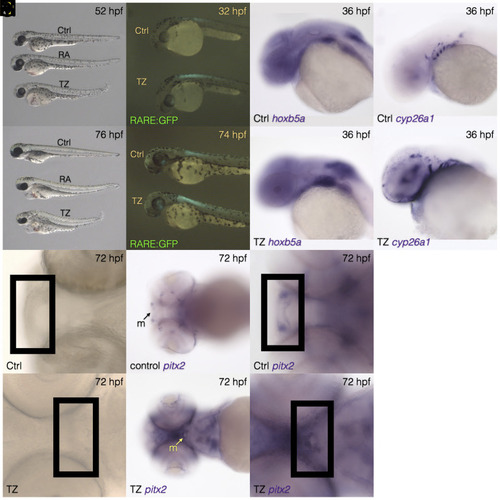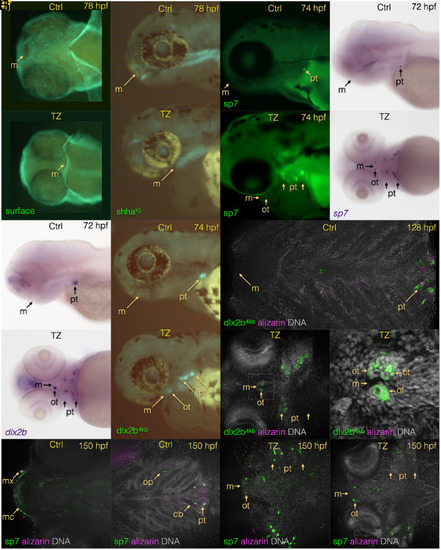- Title
-
Blocking endogenous retinoic acid degradation induces oral tooth formation in zebrafish
- Authors
- Jackman, W.R., Miranda Portillo, L.S., Cox, C.K., Ambrosio, A., Gibert, Y.
- Source
- Full text @ Proc. Natl. Acad. Sci. USA
|
Morphological and gene expression changes induced by TZ exposure. Whole body morphology is similar between embryos exposed to exogenous RA and to TZ starting at 24 hpf ( |
|
TZ exposure changes the position of the mouth and induces oral tooth formation in zebrafish. TZ treatment starting at 24 hpf results in a posteriorly positioned mouth by 78 hpf (surface staining |


